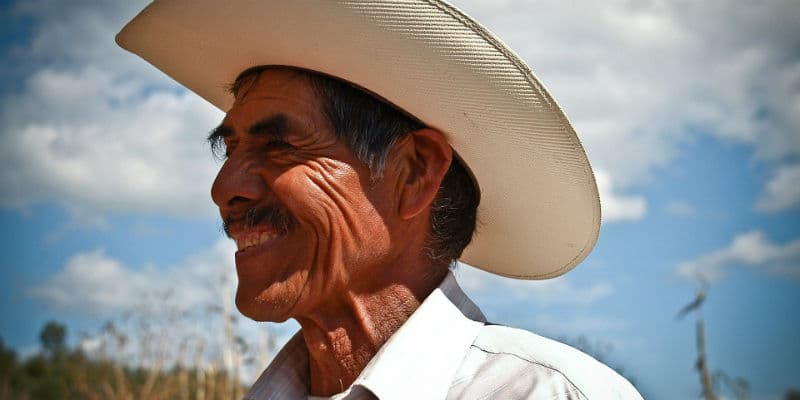Climate change is one of the greatest threats facing our planet today. While its effects are disproportionately felt by the world’s poor, no one, regardless of geography or wealth, can escape its impact.
An increase in droughts, heat waves, and other extreme weather events are taking place around the world, including our own backyard. California—whose farmland provides 15% of the country’s food—has struggled to recover from a devastating five-year drought that had impacts far beyond the state’s borders, causing produce prices to spike nationally.
In reality, it’s our farmers who can truly speak to the changes in climate, because their livelihoods are directly affected. As the world experiences increasing numbers of droughts and extreme weather, it’s farmers who are literally on the ground, looking for ways to adapt. They’re a reminder that addressing climate change must not only be about prevention—it’s already happening, after all—but also about adaptation. Enter, innovation.
One of the biggest challenges facing farmers today is soil degradation, a condition for which human behavior is directly responsible. According to the Global Opportunity Network, approximately 40% of soil used for agriculture is degraded or seriously degraded. That means that a majority of the degraded soil’s top layer (where plants grow) is missing, making it difficult to retain water and nutrients. Farmers are in desperate need of solutions to address this issue. Fortunately, innovative companies like Groasis are developing affordable products that can help.
Prior to starting Groasis, Pieter Hoff made a living as a lily breeder and exporter/importer of bulbs. As he traveled around the globe, however, his conversations with clients made him acutely aware of the declining water levels in the soil, making it difficult, if not impossible, to plant. Understanding the impact that this would have on global food production—not to mention the exorbitant amount of water being used for traditional irrigation methods—Hoff recognized the need to develop a planting solution that used water more efficiently.
Today, Groasis seeks to increase water efficiency for farmers who may have access to water and electricity, but are in need of less expensive alternatives to drip irrigation, the conventional method used in agriculture. We say these are farmers at the low-end of the market, who are often overserved by existing solutions.
Groasis’ initial product‚ the Waterboxx plant cocoon, was designed to shelter seeds and soil from heavy winds while harvesting rainfall and releasing it over the course of many months. In this way, plants are able to grow under the harshest conditions. While the product proved to alleviate the need for herbicides and relied on 90% less water than drip irrigation, there was still room for improvement. The Waterboxx was designed to last ten years so that it could be reused multiple times. Over time, this could result in 90% savings in comparison to drip irrigation making it an appealing option for farmers looking for long-term savings. But the Waterboxx was still too expensive for some, due to its initial, upfront cost.
The Waterboxx was not inexpensive enough to appeal to nonconsumers (what we call customers who previously did not buy products or services in a given market, resulting in nonconsumption). For this reason, the Growboxx was born, made of inexpensive recycled paper that is even less expensive than its predecessor. Today, trials are being performed around the globe to demonstrate its efficacy. If proven effective, it could enable poor communities who lack access to fresh water to grow food.
So often talk about climate change touches on the negative—the irreparable damage that has been caused, the future damage that is to come. But the story of Groasis’ humble beginnings and promising future reminds us that all it takes to make a positive impact is one person, one idea. The key is to correctly diagnose the problem, then work to create simple, inexpensive solutions for all to enjoy. That’s the power of Disruptive Innovation.



